The Blueprint for a Credible Investigation Report
Think of an investigation report as the backbone of any inquiry. It’s a critical tool for accountability, potential legal action, and organizational transparency. It doesn't matter if you're in corporate HR looking into a policy violation or a law enforcement officer building a criminal case—the quality of your report directly shapes the outcome. A well-written document delivers a clear, defensible story of what happened, the evidence you found, and why you reached your conclusions.
The importance here really can't be overstated. In the United States, for example, law enforcement agencies rely heavily on meticulously structured reports to build their cases and present evidence in court. This isn't just paperwork; it's about maintaining the transparency and accountability essential for public trust. It’s why departments invest so much in training officers on effective report writing, making sure every relevant detail is captured in a way that stands up in legal proceedings.
The Foundation of a Defensible Document
At its heart, your report must be built on a bedrock of objectivity and fact. You're taking a complex, often messy, situation and translating it into a logical, easy-to-follow format. I like to think of it as building a case brick by brick. Each fact is a brick, and the report itself is the mortar holding it all together. A poorly written report will cause an otherwise solid investigation to crumble under the first sign of pressure.
For instance, a vague report in a corporate fraud investigation could easily lead to a disciplinary action being overturned. In a criminal case, an imprecise report could get the entire case dismissed. This is where professional, structured training becomes absolutely indispensable. For example, McAfee Institute's certification programs provide investigators with proven methodologies to ensure their reports are clear, concise, and legally defensible.
A great report doesn't just list facts; it tells a clear and objective story that leads the reader to an unavoidable, evidence-based conclusion. It should be able to stand on its own, providing a complete picture for anyone reviewing it, even years later.
To give you a clearer picture, every solid report should contain a few core components. I've broken them down here to give you a quick reference guide.
Core Components of an Investigation Report
| Component | Purpose and Key Content |
|---|---|
| Executive Summary | A concise overview of the entire report. It should briefly state the allegation, the key findings, and the final conclusion or recommendation. Think of it as the 30-second version for a busy stakeholder. |
| Background/Introduction | This section sets the stage. It details who initiated the investigation, the specific allegations or incidents, and the scope of the inquiry. It answers the "why" behind the investigation. |
| Investigative Process | A chronological account of the steps you took. This includes who was interviewed, what evidence was collected (documents, digital files, etc.), and the methods used. Transparency here is key for credibility. |
| Findings of Fact | The heart of the report. This is where you present the evidence objectively, without analysis or conclusion. Each finding should be a clear, declarative statement supported by specific evidence (e.g., "On May 5th, Witness A stated..."). |
| Analysis/Conclusion | Here, you connect the dots. You analyze the findings of fact against relevant policies, laws, or standards and explain how you arrived at your conclusion. This is where you state whether the allegation was substantiated, unsubstantiated, or inconclusive. |
| Recommendations | Based on your conclusion, you propose specific, actionable steps. This could range from disciplinary action and policy changes to further training or no action at all. |
| Exhibits/Appendices | The home for all your supporting evidence. This includes interview transcripts, signed statements, relevant emails, photos, and any other documentation referenced in the report. |
This table covers the essentials, but knowing what to include is only half the battle.
Why Structured Training Is Essential
Knowing how to present this information is what separates an amateur from a professional. This is precisely why structured training, like the professional certifications offered by the McAfee Institute, is so valuable. These programs give investigators the frameworks they need to produce documents that are not just thorough but can also withstand intense scrutiny.
Take digital evidence, for instance. Understanding the legal nuances of how to present it is a highly specialized skill. Without the right training, an investigator could easily mishandle or mischaracterize critical information, jeopardizing the whole case. For example, McAfee Institute's certification programs train professionals to handle digital evidence correctly from collection to reporting. You can learn more about the legal fundamentals of cyber investigations to see just how critical this knowledge is for creating legally sound reports.
Ultimately, mastering how to write a great investigation report is a core competency for any investigator. It's what ensures all your hard work translates into a credible, actionable document that achieves its purpose, whether that's enforcing company policy or delivering justice.
With your outline locked in, it’s time to start putting the pieces together. This is where you’ll weave all that scattered information—interview notes, documents, digital evidence—into a story that’s both coherent and defensible. Every section of your report has a specific job, and nailing each one is key for anyone who needs to understand what happened.
To make this practical, let's walk through a common scenario: a corporate investigation into a sales manager suspected of filing fraudulent expense claims. Using this example will help clarify exactly what to include in each section and how to frame it effectively.
The Title Page and Executive Summary
First up, the Title Page. It might seem basic, but it’s your report’s professional handshake. It needs the case number, a clear title (e.g., "Investigation into Alleged Expense Fraud"), the date, and the names of the investigator and the report's recipient.
The Executive Summary, however, is arguably the most important part of the entire document, especially for busy leaders. Think of it as your whole report, distilled into one powerful, high-level overview. It needs to be concise and get straight to the point, covering the allegation, your key findings, and the final conclusion.
For our fraud scenario, a sharp summary would look something like this:
"This report details an investigation into allegations that Sales Manager John Doe submitted fraudulent expense reports between January 1 and March 31, 2024. The investigation substantiated these allegations, finding that Mr. Doe claimed $5,200 in personal expenses as business costs, a violation of the company's Code of Conduct and Expense Policy. The recommendation is for disciplinary action, up to and including termination."
Just like that, the reader knows exactly what’s going on and how serious it is.
Methodology and Scope of Investigation
This is where you explain how you did what you did. Being transparent about your process builds immense credibility because it shows you were methodical, thorough, and fair. You should clearly outline the steps you took, usually in chronological order.
- Interviews Conducted: List who you talked to, their job titles, and when the interviews happened.
- Evidence Reviewed: Get specific. Mention the types of evidence you analyzed, like expense reports, corporate card statements, email threads, and relevant company policies.
- Investigative Period: Define the exact timeframe your investigation covered (e.g., "This investigation covered expense reports submitted from January 1, 2024, to March 31, 2024.").
Your goal here is to create a clear audit trail of your work, leaving no room for questions about your thoroughness. This is a skill that certification programs from McAfee Institute reinforce, teaching investigators how to document their methodology in a way that is clear and stands up to legal scrutiny.
Findings of Fact The Core Narrative
The Findings of Fact section is the heart of your report. This is where you lay out the evidence-backed story of what happened, piece by piece. The golden rule is objectivity. You present only verified facts, with zero analysis, opinion, or guesswork. Each finding should be a straightforward statement supported by a specific piece of evidence.
For instance, when documenting interviews, you report what was said, not your interpretation of it. This is a skill that takes practice, and mastering it is a hallmark of an effective investigator. McAfee Institute helps investigators master this skill through its programs, such as those focused on investigative interviewing methodologies, which train professionals to capture and report statements with precision and neutrality.
A huge part of this section is organizing your findings logically—often chronologically works best. This visual gives a good overview of the evidence-handling process that feeds directly into this section.
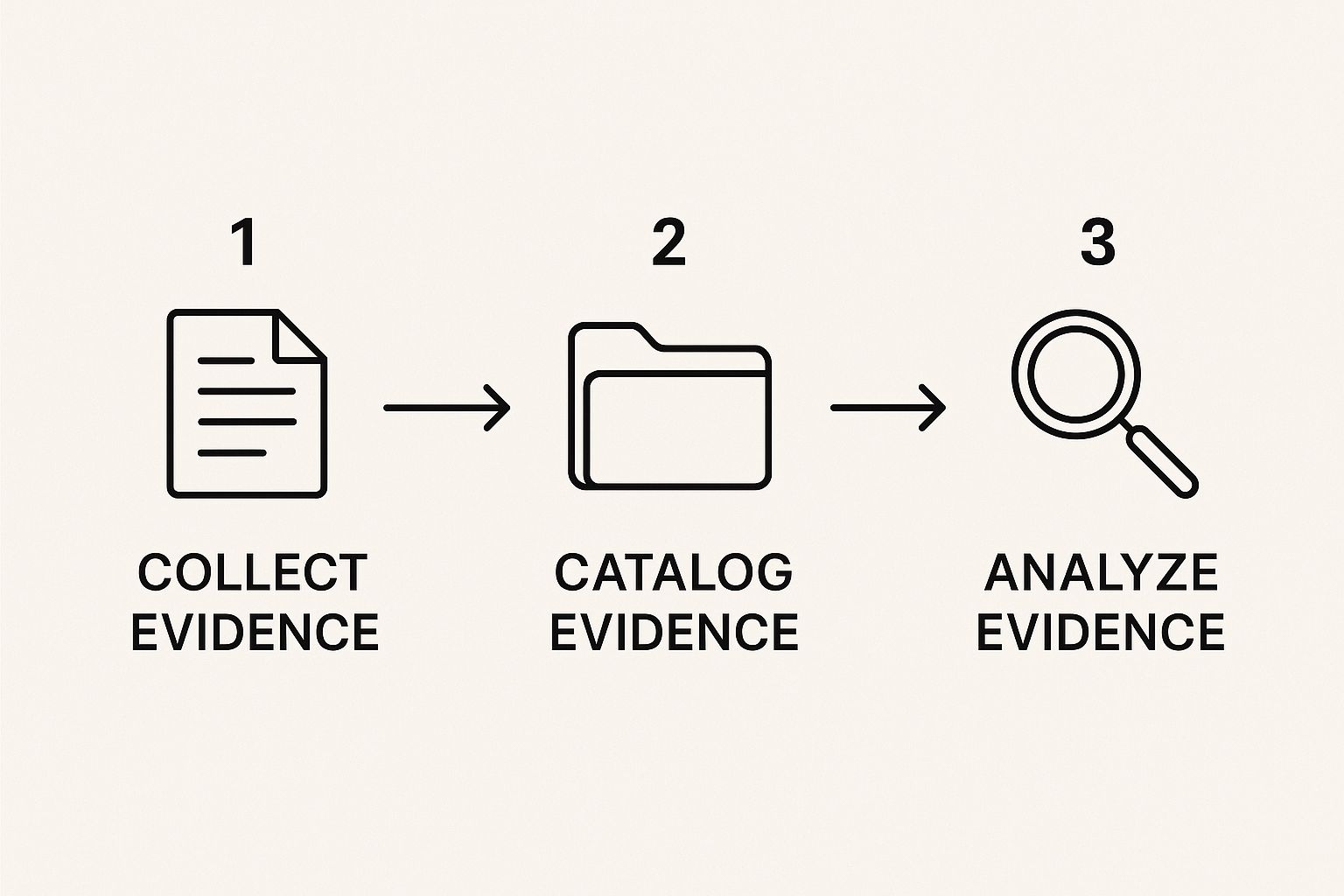
This flow, from collection to analysis, is fundamental. It ensures every piece of evidence is properly accounted for before it’s used to back up a finding.
Here’s how you might structure the findings in our fraud example:
- Finding 1: On April 5, 2024, an anonymous tip was received alleging Sales Manager John Doe was submitting personal expenses for reimbursement. (Evidence: Exhibit A - Anonymous Tip Report).
- Finding 2: A review of John Doe's expense reports from January 1 to March 31, 2024, identified 12 transactions at "The Grand Restaurant" totaling $1,800. The reports listed these as "Client Dinners." (Evidence: Exhibit B - Expense Reports).
- Finding 3: A review of John Doe's corporate calendar shows no client meetings scheduled on the dates of the 12 transactions at "The Grand Restaurant." (Evidence: Exhibit C - Calendar Records).
- Finding 4: During his interview on April 10, 2024, John Doe stated he could not recall the specific clients for these dinners. (Evidence: Exhibit D - Interview Transcript).
See how each statement is a verifiable fact tied directly to an exhibit? This creates an undeniable foundation for your conclusion.
Analysis and Recommendations
Now, in the Analysis section, you finally get to connect the dots. This is where you take your Findings of Fact and weigh them against the relevant company policies or legal standards. You explain how the evidence proves or disproves the allegation.
For our fraud case, the analysis would clearly state:
"The evidence shows John Doe submitted 12 expense claims for meals that were not business-related. This action directly violates Section 4.2 of the Company Expense Policy, which states that only pre-approved client entertainment is reimbursable."
Finally, the Recommendations section provides clear, actionable steps based on your substantiated findings. They must be specific and directly justified by the outcome of your investigation.
- Primary Recommendation: Initiate disciplinary proceedings against John Doe in accordance with the company's Code of Conduct, with potential outcomes up to and including termination.
- Secondary Recommendation: Mandate that all sales managers attend a refresher training course on the company's expense policy within the next 60 days.
- Tertiary Recommendation: Implement a quarterly audit of the top 10% of employee expense submissions to deter future violations.
By building your report section by section with this level of detail and logic, you create a powerful document that doesn't just resolve the immediate problem—it helps fortify the organization against future risks.
Gathering and Documenting Evidence the Right Way
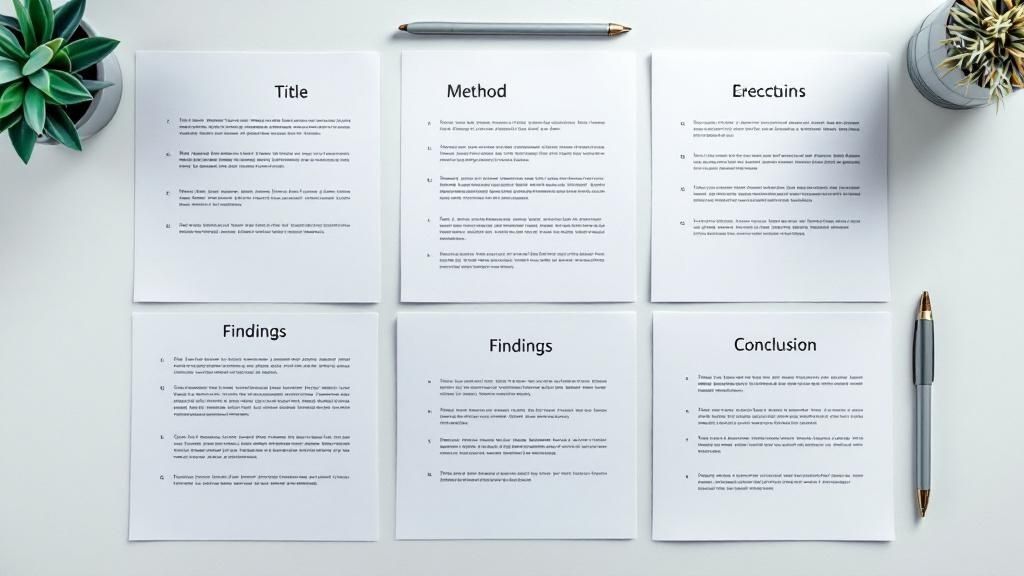
Let's be blunt: an investigation report is only as good as the evidence backing it up. Without solid, properly handled proof, your report is just a collection of opinions. This is where the real work—the meticulous process of gathering and documenting evidence—makes or breaks a case.
Handling evidence isn't a one-size-fits-all job. You have to be just as comfortable bagging a physical document as you are preserving a string of encrypted messages. Each piece requires a specific approach to collection and documentation to ensure its integrity isn't compromised.
Mastering Different Evidence Types
Evidence is rarely simple. In any modern investigation, you're almost guaranteed to deal with a mix of physical, digital, and testimonial proof. Knowing how to manage each one is absolutely fundamental to building a case that holds water.
- Physical Evidence: This is the tangible stuff—documents, equipment, or any physical object connected to your case. The absolute key here is maintaining a rock-solid chain of custody. That means a detailed log of everyone who touched the evidence, when they touched it, and why.
- Testimonial Evidence: This is what you get from witness interviews. Your goal is to capture exactly what was said, word for word. Recording interviews (with consent) and getting them transcribed is the gold standard for preserving these statements.
- Digital Evidence: This is a huge and growing category, covering everything from emails and social media activity to server logs and smartphone data. Digital evidence is notoriously fragile and easy to alter, making proper forensic procedures a must.
There's no denying that the digital age has completely reshaped the investigative landscape. With so many cases revolving around digital footprints, the demand for specialized tools and techniques has skyrocketed. This shift means adapting everything from how we conduct virtual interviews to using advanced software to make sense of massive data sets. You can see more about how emerging trends are shaping modern investigative practices on benardinc.com.
The Non-Negotiable Chain of Custody
The chain of custody is your evidence's biography. It's the chronological paper trail that documents every single step from seizure to storage to analysis. If you can't prove that the evidence you're presenting is the exact same evidence you collected—and that no one messed with it—it could get thrown out.
A broken chain of custody can destroy an otherwise perfect investigation. Every hand-off, every analysis, and every moment in storage must be documented without fail. There are no shortcuts.
And this isn't just for physical items anymore. A chain of custody is just as critical for digital artifacts. When you create a forensic image of a hard drive, for example, you have to document the entire process. That includes noting the software you used and generating cryptographic hash values to prove your copy is a perfect, unaltered duplicate of the original.
Best Practices for Evidence Documentation
If you want to write an investigation report that can withstand intense scrutiny, you have to document your evidence flawlessly. The goal is to create a record so clear and detailed that another investigator could pick up your file and know exactly what you have and where it from.
Tips for Bulletproof Documentation:
- Log Everything Immediately: Don't put it off. Document evidence the second you collect it. Memories fade, and critical details get lost in the shuffle.
- Be Incredibly Specific: Don't just write "laptop." Describe it as a "13-inch silver Dell XPS laptop, serial number XXXXX, with a visible scratch on the lid."
- Photograph Everything: Take pictures of physical evidence exactly where you found it before you touch it. For digital evidence, take screenshots.
- Use an Evidence Log: Keep a master log for every piece of evidence in your case. Each entry needs a unique ID, a description, the date and time of collection, who collected it, and where it's being stored.
This is where professional training really shines. For instance, the certification programs at McAfee Institute offer hands-on training in these exact skills, from digital forensics to evidence handling. They teach you not just how to find information, but how to collect it in a way that makes it admissible in court—a skill that separates the amateurs from the pros. Mastering these techniques is what turns your hard work into a credible, defensible report.
Writing with Clarity and Unquestionable Objectivity
Once your evidence is organized and your report is structured, the words you choose become your most powerful tool. The real difference between a report that stands up to scrutiny and one that falls apart often boils down to two things: clarity and objectivity. Your goal is to write in a way that leaves zero room for misinterpretation and removes even the slightest hint of personal bias.
A professional tone is non-negotiable. It establishes immediate credibility with your audience, whether they're senior leaders or legal counsel. Every sentence must be factual, direct, and completely free of emotion. Think of yourself as a camera, not a commentator—your job is to show what happened, not tell people how to feel about it.
Eliminate Jargon and Ambiguity
Your report has to be understood by anyone who reads it, no matter their background. This means steering clear of technical jargon, unexplained acronyms, and any vague language that could be twisted or misinterpreted. Crystal-clear writing ensures your findings land exactly as you intended.
Just look at the difference:
- Before: "The subject utilized a networked computer to access unauthorized files." (This is vague and full of jargon.)
- After: "On May 10, 2024, at 2:15 PM, John Smith used his company-issued laptop to open and view the '2025 Financials' folder, to which he did not have access permissions." (This is specific, clear, and factual.)
This level of precision is what separates amateurs from professionals. It swaps fuzzy descriptions for hard facts, making your conclusions incredibly difficult to dispute.
The Power of Active Voice and Factual Language
Using the active voice makes your writing more direct and impactful. It clearly shows who did what, which is essential for establishing a clear narrative and assigning responsibility.
- Passive Voice: "The policy was violated by the employee."
- Active Voice: "The employee violated the policy."
The active voice is simply stronger and more confident. At the same time, you must strip out any word that implies emotion, judgment, or assumption. Your credibility hangs on presenting facts, not your feelings.
Objectivity is the bedrock of a credible investigation report. The moment you introduce words like "dishonest," "clearly," or "obviously," you shift from being a fact-finder to an accuser, undermining the entire investigation. Stick to what you can prove.
For instance, when you're dealing with digital evidence from social media, it's incredibly easy to misread tone or intent. The key is to report only what is explicitly stated or shown. Professionals learn to navigate these complexities by following structured social media investigations methodologies, which prioritize objective evidence collection over subjective interpretation.
Avoid Emotionally Charged Words
Certain words carry an emotional charge that can instantly signal bias to your reader. Removing them is a simple way to strengthen your report’s professionalism and objectivity.
Words to Avoid vs. Factual Alternatives
| Instead of This (Biased Language) | Use This (Objective Language) |
|---|---|
| "He lied about his whereabouts." | "His statement contradicted his GPS location data." |
| "She aggressively confronted her manager." | "She raised her voice and pointed her finger at her manager." |
| "It was a blatant violation of the rules." | "The action was a direct violation of Company Policy 4.2." |
| "He suspiciously deleted the files." | "He deleted the files at 11:00 PM, two hours after the investigation began." |
This discipline in language is a core skill taught in professional development. Programs at the McAfee Institute, for example, place a heavy emphasis on communication and ethics. They train investigators to ensure their written work reflects the highest professional standards, making their conclusions far more persuasive because they are built purely on fact, not opinion. Learning how to write an investigation report is learning how to communicate with undeniable objectivity.
How to Review and Finalize Your Report
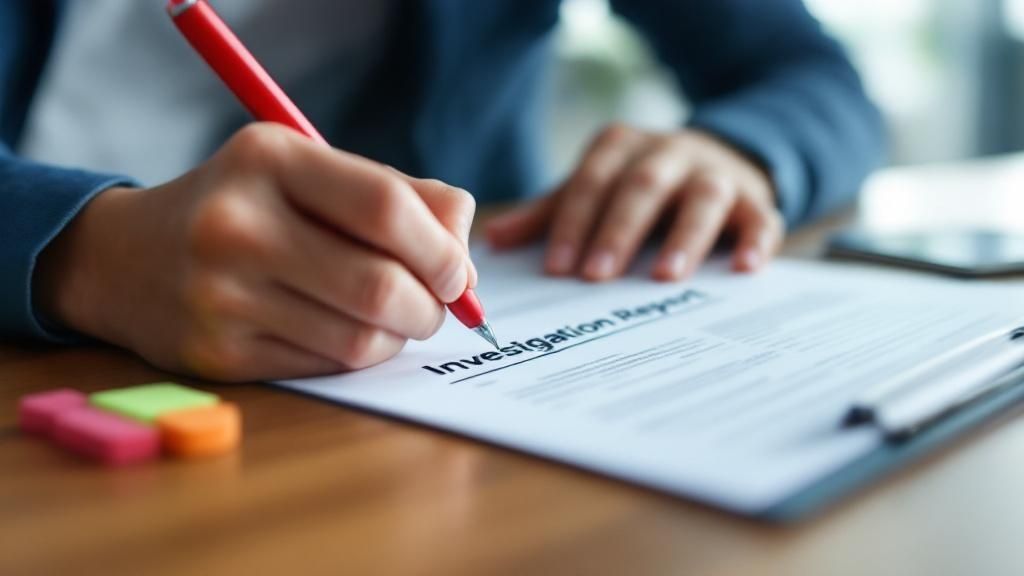
Here's a hard truth: your investigation isn't really over when you type the last word. A sloppy, rushed report can unravel weeks of meticulous work, destroying your credibility and derailing the entire process. Don't let it happen.
The final review is where you transform a solid draft into a polished, defensible document that can withstand intense scrutiny. It’s far more than a quick spell-check; it demands a systematic, multi-layered approach to ensure every detail is flawless and every conclusion is rock-solid.
The Substantive Review
Before you even think about grammar, you need to challenge the very substance of your report. Put on your most critical hat and question every single assertion, every finding, and every conclusion. Your goal is to make sure the document is logically sound, factually accurate, and internally consistent.
Ask yourself these tough questions:
- Is every conclusion irrefutably supported by evidence? Trace each conclusion back to a specific finding of fact, and then trace that finding back to a piece of evidence. There can be no broken links in that chain.
- Is the narrative logical and easy to follow? Imagine you know nothing about this case. Read the report from that perspective. Does the story make sense? Is the timeline clear?
- Are there any internal contradictions? Hunt for inconsistencies between witness statements, timelines, and the evidence you've presented. If you find any, have you adequately explained and addressed them in your analysis?
- Does the report stick strictly to the scope of the investigation? Make sure you haven't strayed into analysis or information that falls outside your original mandate.
This substantive check is a core skill that separates good investigators from great ones. Professionals with advanced training, like the certifications from the McAfee Institute, learn to dissect their own work with this level of objective rigor. It’s how they make their reports virtually airtight.
The Proofreading and Formatting Polish
Once you’re confident in the substance, it’s time to zoom in on the details. This is where you polish the report, focusing on clarity, professionalism, and pure readability. A clean, well-formatted report commands respect and signals your attention to detail.
A report riddled with typos and formatting errors sends a clear message: you were careless. If you were careless with the report, the reader will assume you were careless with the investigation itself.
This stage is much more than just hitting "spell-check." It's a comprehensive polish.
Your Final Polish Checklist
| Review Area | What to Look For |
|---|---|
| Grammar & Spelling | Scour for typos, grammatical mistakes, and incorrect punctuation. Reading it aloud is a great trick for catching awkward phrasing. |
| Formatting | Ensure consistent use of headings, fonts, and spacing. Double-check that all pages are numbered and exhibit labels are correct. |
| Clarity & Tone | Strip out any lingering jargon, biased language, or emotional words. The tone must be objective and professional from start to finish. |
| Accuracy of Details | Meticulously double-check every single date, time, name, and number. One wrong digit can completely compromise a key finding. |
The Power of a Peer Review
Never, ever underestimate the value of a fresh set of eyes. After you’ve stared at the same document for hours or days, you become blind to its flaws. A peer review from a trusted and qualified colleague is one of the most powerful ways to catch errors you’ve completely missed.
Find a peer who understands the investigative process but wasn't involved in this specific case. Ask them to read it for clarity, logic, and any potential vulnerabilities. Their feedback is invaluable for strengthening your work before it lands on the desks of decision-makers.
It's also worth noting how the field itself is changing. Global events have dramatically shifted investigative practices, forcing us to be more resilient and adaptable. We've seen a massive increase in remote work and digital misconduct, demanding new techniques. There’s also a much-needed focus on psychological safety and mental health within the investigative process. These shifts mean our reports must also adapt to capture these nuances. You can dive deeper into these significant global trends on DNI.gov.
Once your report has passed these rigorous checks, it's finally ready for submission and archiving. Following proper procedures for distribution and secure storage ensures the integrity of your hard work is maintained long after the case is closed.
Frequently Asked Questions
Even with the best guides, writing an investigation report can throw you a few curveballs. Every case has its own quirks. Here are some of the most common questions I get from investigators, along with some practical advice from my own experience in the field.
How Much Detail Should I Include in the Findings Section?
The goal is to be thorough, not overwhelming. Every single fact you put in the Findings section needs to be directly tied to the scope of your investigation and, most importantly, backed by a specific piece of evidence. You have to meticulously lay out the who, what, when, where, and how for every critical event.
Stay away from speculation or irrelevant tangents—they just water down your report's impact and credibility. A structured approach is your best friend here. For example, the training programs at the McAfee Institute really hammer home how to document effectively, teaching you to distill a mountain of complex information into crisp, powerful findings that tell a clear story. Mastering that skill is what keeps your report focused and solid.
What Is the Biggest Mistake to Avoid When Writing a Report?
Without a doubt, the single most damaging mistake is letting your personal opinion or bias seep into the report. Your job is to be an objective, impartial reporter of facts. You are not the judge or the jury. The second you use loaded language, make assumptions, or seem to favor one side, the entire report's credibility is shot.
Your report must be a fortress of fact. Stick to what you can prove with tangible evidence. Phrases like "it seems that" or "I believe" have no place in a professional investigation report.
This principle of unwavering objectivity is a cornerstone of any serious investigative training. Certification courses at the McAfee Institute, for instance, stress this constantly, training you to build a wall between your personal feelings and the facts of the case. It’s that neutrality that makes your conclusions unshakeable.
How Should I Handle Conflicting Witness Testimonies in the Report?
When you’ve got conflicting witness statements, your job is simple: document everything with total objectivity. You need to present each witness's account accurately in the Findings section, even if they completely contradict each other. It's not your job to play referee and decide who’s telling the truth at this stage.
Later, in your Analysis section, you can—and should—highlight the discrepancies. You can point out where the stories diverge, but avoid declaring one witness more credible than the other unless you have independent, corroborating evidence that proves one account is true. Your report must reflect all the information you gathered, not just the parts that fit into a neat little box.
Can I Use a Template for My Investigation Report?
Absolutely. Starting with a template is a smart move. A good template acts as a valuable checklist, making sure you hit all the essential sections and don't accidentally leave out a critical component. It gives you a solid framework to organize your evidence and your thoughts.
But—and this is a big but—you have to be ready to adapt it. No two cases are identical, so a rigid, one-size-fits-all approach just won't cut it. This is another place where professional development makes a huge difference. Specialized training, like the certification programs offered by the McAfee Institute, teaches you the core principles behind the structure. This gives you the expertise to modify any template to fit the unique puzzle of your case, ensuring your final report is both comprehensive and perfectly tailored to the situation.
Ready to elevate your investigative skills and master the art of writing defensible reports? The McAfee Institute offers world-class, accredited training and certification programs designed for professionals in law enforcement, intelligence, and the private sector. Explore our courses today to gain the expertise needed to excel in your career. Learn more at https://www.mcafeeinstitute.com.


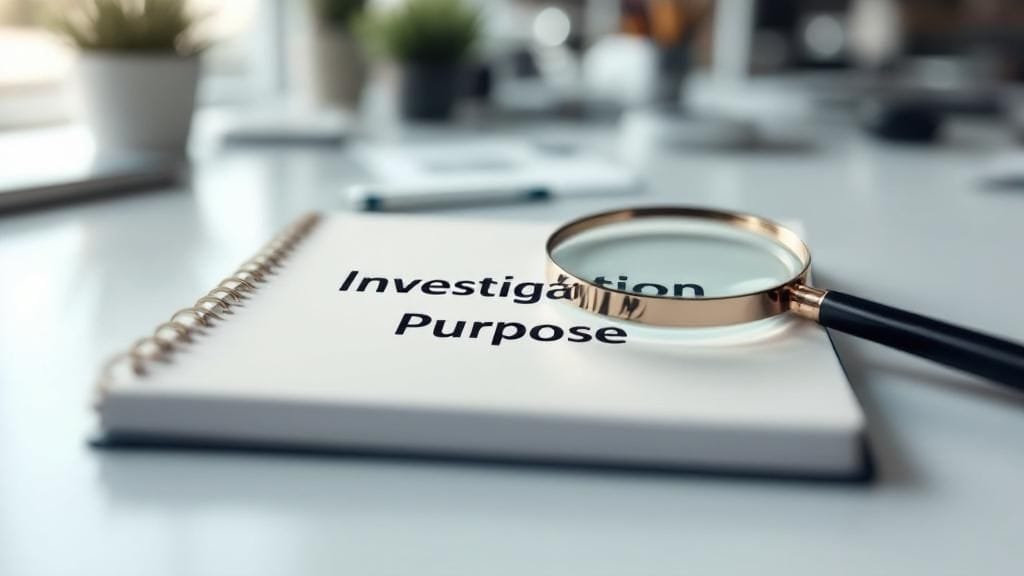
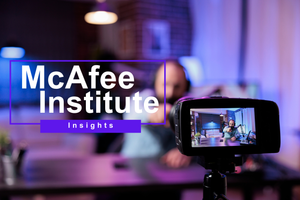
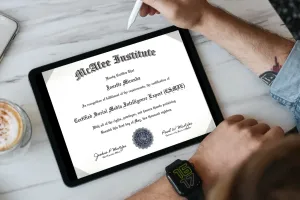

Member discussion